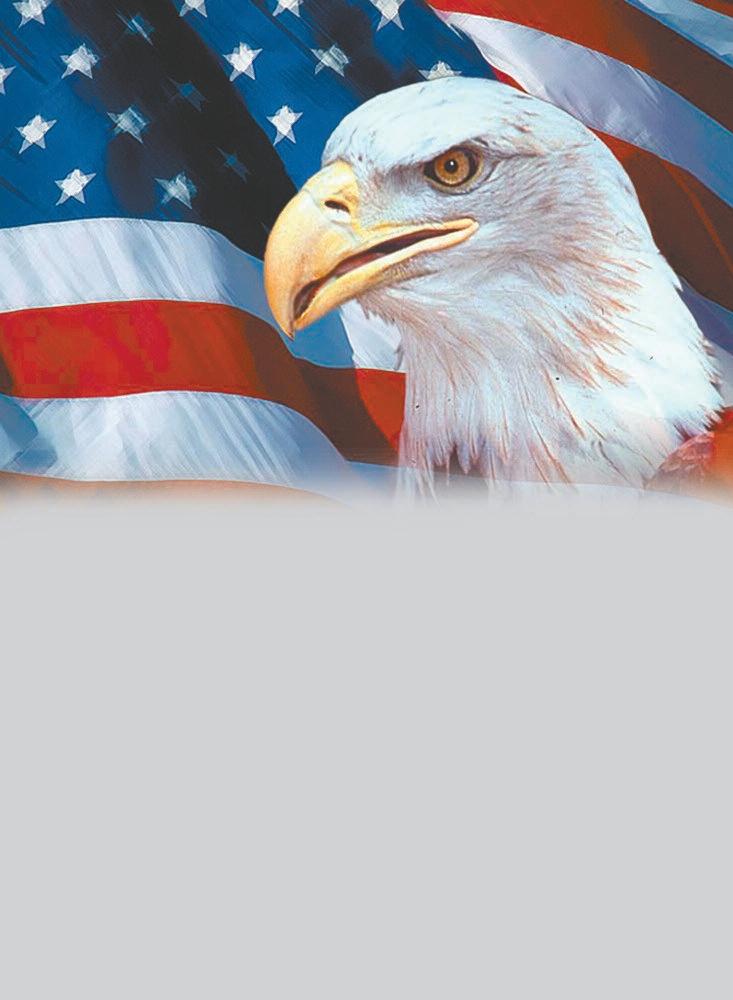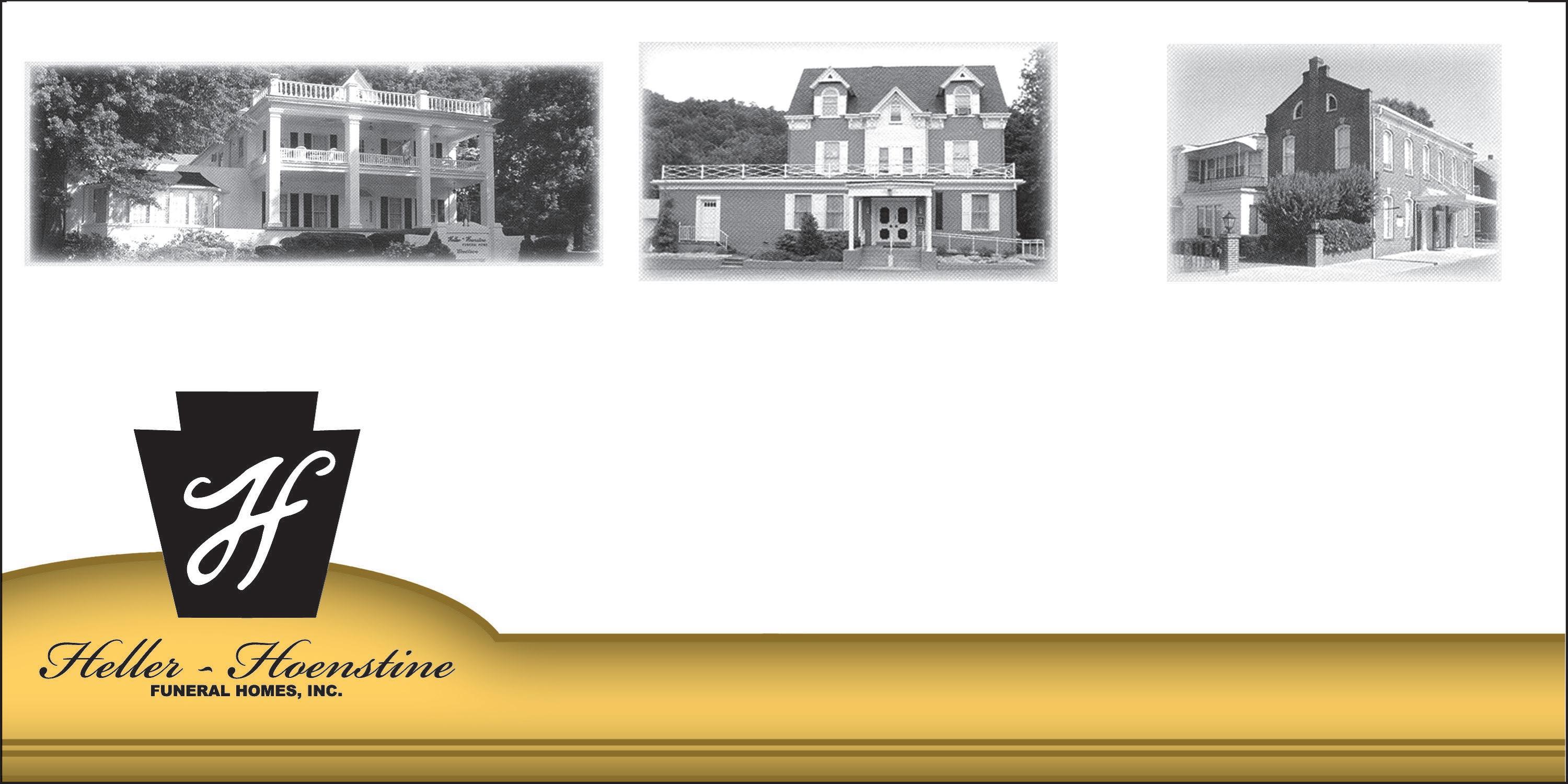
7 minute read
Chapter 2: The French and Indian War
America was an indentured servant man by the name of John Howland, who “quickly discovered that the deck of a tempest-tossed ship was no place for a landsman under sail.
The Mayflower lurched suddenly to leeward. Howland staggered to the ship’s rail and tumbled into the sea. But dangling over the side and trailing behind the ship was the topsail halyard, the rope used to raise and lower the upper sail. Howland ... found the halyard, and he gripped the rope with such feral desperation ... he never let go. Several sailors took up the halyard and hauled Howland back and used a boat hook to haul him in..”[4]For most people this story is interesting, and it ends here, but not for us.
Advertisement
“John Howland became a successful businessman, married and raised ten children, who would, in turn, produce an astounding eightyeight grandchildren.” [5]
Two of John Howland’s descendants live in Mifflin County today. John is the 17th great-grandfather of George Anderson who is a Vietnam veteran and whose father served under General George S. Patton in World War II. Jan Snedeker is a U.S. Navy veteran from 1968 to 1974, followed up by serving in the Reserves until 1979. He also recognizes John Howland as a 17th great-grandfather! That one indentured servant, who had a near death experience on a small ship in 1620, led to two honorable United States military veterans — from Mifflin County, who both owned local businesses! Jan’s father was also a veteran of World War II.
Mifflin County today has obviously been affected by The Mayflower. And Mifflin County has had a long line of people who have honorably fulfilled a commitment and served their country. We are and have been a county (or “a people”) committed to our nation.
The French and Indian War lasted from 1754 to 1763, followed shortly by the Revolutionary War — 17751781. Historically, excluding the French and Indian War and the Revolutionary War, on the US continental soil you can count six major wars (dependent on definition of a war), and a disputed list of another 19 engagements such as native American wars and conflicts up to 2001. We will only look specifically at our early major wars.
Pennsylvania was governed by William Penn and a Quaker government. Quakers are pacifists and do not believe in fighting and this was part of the problem prior to the Revolutionary War. During the French and Indian War, we were colonies under British “protection and rule.” While under British Rule we as British citizens fought in the French and Indian War with British soldiers who looked upon us not as British citizens on an equal level, but as those who left Britain and came here to extend the realm on plantations.
The French and Indian War started by an attack on a so called “French Diplomatic Mission” of armed French soldiers, by Colonel George Washington (as a British officer) who was alerted by native American Tanacharison, to the group of French soldiers hidden in a secluded glen (present day Jumonville Glenn in Western Pennsylvania). In this fight, the French officer, Jumon de Villiers was killed. Washington was later required to surrender Fort Necessity to the French officer Louis Coulon de Villers after being attacked by French and native American forces. He was the brother of Jumon de Villiers. Louis Coulon de Villers is the only person to ever have Washington surrender to him. In that surrender document written in French, de Villers deceptively had Washington admitting he assassinated Jumon. It stated in part: …Our Intention…” was never to disturb the peace and harmony which exist between two friends as two Prince allies, but only to avenge the assassination of one of our officers…” [6]
Two years later General Braddock took a British Army to push the French out of Fort Duquesne (now Fort Pitt) in present-day Pittsburgh. Braddock
was defeated by the French and the native Americans. Washington, who was again on the scene with Braddock’s Army, showed his strength and leadership with the Virginia Militia that saved the day from a total catastrophe. As a result of Braddock’s defeat, native Americans now came east to attack settlements on the Frontier, resulting in a line of frontier forts being constructed across parts of Maryland and Pennsylvania; Forts Cumberland, Frederick, Loudoun, Lyttleton, Shirley and Granville. Frontier being defined as “specific sites that emerged when invasion
N
W E
S
Fort Granville was located along the Juniata River, near the present-day site of Lowe’s. The approximate location is shown by the X on the map. Due to topographic changes, the exact location cannot be determined. (Map image from Google Maps)



threatened, prone to contraction rather than expansion, and most people fled from the frontiers….”
Fort Granville was one of those sites. “This marked the outline of the frontier for people living in them, fear and uncertainty rather than hope and opportunity filled their lives, and they looked to their government for military aid and security.” [7]
Fort Granville was built by the militia under George Croghan in 1755-56 as part of that frontier defense. It being located along the Juniata River about a mile from Lewistown (in the vicinity of the present-day Lowe’s store), next to the river where “there is a bend in the river that a man could shoot across” [8] The exact location is still unknown because of changes in topography.
Of the French and native American war parties spurned by Braddock’s defeat; “the greatest single success achieved by these French-and-Indian parties was won about the end of July when a party commanded by Captain Coulon de Villiers, the officer who had defeated Washington at Fort Necessity, took Fort Granville (near present Lewistown, Pennsylvania).” The French account continues, “De Villiers left Fort Duquesne about July 22 with a detachment of twenty-three Frenchmen and thirty-two Shawnee, Delaware, and Illinois Indians; and he began his attack late on the morning of August 2 (July 30, according to English accounts). Part of the garrison had left earlier that morning with Captain Ward (Eward in the French report), (The Pennsylvania Gazette reported the soldiers had gone to protect harvesters) leaving only twenty-four men under command of Lieutenant Armstrong. On the following morning the French succeeded in setting the fort afire, the Lieutenant was killed” [9] … then “ the enemy called upon the besieged to surrender and told them that they should have quarter if they surrendered … one John Turner immediately opened the gates…”[9] Those within were taken prisoner, including 22 soldiers, 3 women and a number of children. The Gazette, further noted that “they set off, after setting up French colours near the fort on which they left a shot pouch, with a written paper in it.” [10]
Captain Jacob, a noted Delaware war leader, then completed the burning of the place and the party set off homeward. De Villiers returned to Fort Duquesne on August 21 with twenty-seven prisoners and four scalps.” [11]
Because of Fort Granville being burned, Lieutenant Colonel Armstrong, brother of the Lieutenant killed at Fort Granville and 300 men from various troops along the Susquehanna, made a surprise attack on the native American village of Kittanning. The village in large part was destroyed. This village had been a headquarters for the Delaware Indians who had made continual raids on English settlements. This was the home of Captain Jacobs who burned Fort Granville.
It was also stated by John Hogan, “One of the escaped prisoners was taken to Kittanning ... at which time John Turner, one of the prisoners, was burnt…. The deponent further says that the Indians sold a prisoner to the French for which they received a nine-gallon keg of brandy.” [12]


The Sentinel wants to thank all military veterans for their service to our nation.
23 South Dorcas Street Lewistown, PA 17044 FAFCU@FIRSTAREAFCU.COM www.firstareafcu.com

They sacrifice so much every day, from spending months away from their families to facing peril on the battlefield. They are our nation’s heroes, the men and women who serve in our armed forces. We commend them on their service and salute all who have died in the name of freedom.
Woodlawn, Lewistown| 717.248.6727 Geoffrey A. Burke, Supervisor
Burnham | 717.248.7853 Michael Shoop, Supervisor Logan Street, Lewistown | 717.248.7823 Dan Kochenderfer, Supervisor








